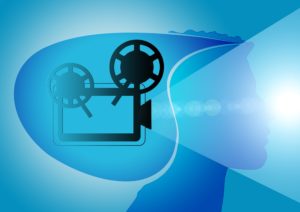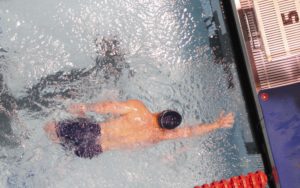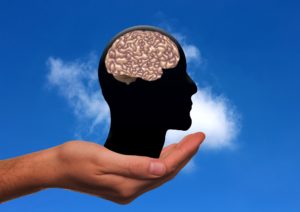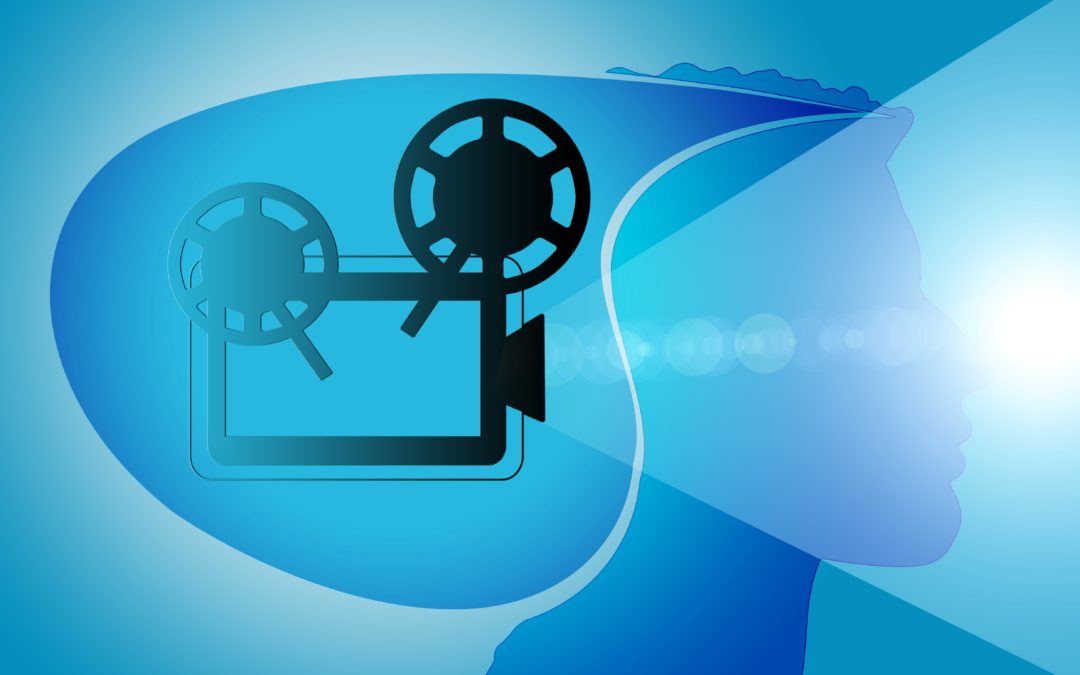 Success Strategies For Everyone
Success Strategies For Everyone
During the 2016 Summer Olympics, half the planet watched as many athletes set breathtaking personal and world records. What sets these and other world-class athletes apart from the crowd? Can we learn from them to achieve our own goals?
Personally, I have no ambitions to be a world-class athlete, but their success proves that extraordinary achievements are possible. After all, we’re all human so the possibility for achievement is not just for them, but for everyone. Including you.
Visualization Invites Success
One of the most simple and underestimated success strategies is visualization, also called imagery. In hypnosis, it’s also known as guided imagery or multi-sensory imagery.
The most decorated gold medalist, Michael Phelps, has won 23 gold medals during his Olympic swimming career. Phelps started visualizing when he was 14 years old. He would lie in bed and rehearse his swims, both the best and worst-case scenarios.[1]
 Practicing the worst-case scenarios may go against everything you’ve heard about manifesting your dreams. But facing what he feared might go wrong, then figuring out possible solutions, prepared Phelps for the unexpected and helped him overcome those fears. With a back-up plan in place, he was ready for anything.
Practicing the worst-case scenarios may go against everything you’ve heard about manifesting your dreams. But facing what he feared might go wrong, then figuring out possible solutions, prepared Phelps for the unexpected and helped him overcome those fears. With a back-up plan in place, he was ready for anything.
Preparing for the worst doesn’t have to invite the worst. In fact, thorough preparation creates a reflective, well-conceived vision and practice schedule that builds confidence.
Phelps is not the only one who uses visualization. According to the NY Times, visualization has been part of elite sports dating back to the 1960s when Billy Jean King used visualization to become a world-class tennis star.[2]
Fast forward forty-four years later and every athletic team at the 2014 Winter Olympics used visualization to boost their success. The US team alone brought nine sports psychologists to help the athletes develop multi-sensory scripts they could use to enhance their chance to win.[3] Multi-sensory scripts include all the senses, not just visualizing a picture of oneself, but feeling the entire experience as if it were real right now. This is a powerful form of self-hypnosis you can practice to strengthen your own resolve and self-confidence as you move toward realizing a goal.
Visualizing Moves You Into Flow
 I worked with a person who wanted to move forward in her business, but felt stuck. She had ideas for a book and other ways to grow her work, but hadn’t yet pulled the pieces together to do it.
I worked with a person who wanted to move forward in her business, but felt stuck. She had ideas for a book and other ways to grow her work, but hadn’t yet pulled the pieces together to do it.
After listening to her describe what she wanted to manifest in her life, I used a visualization technique with her that’s in my book, Golden Words. The technique is called Ride The River To Your Goal.
She imagined climbing into a gondola along with her spiritual and personal mentors. The gondolier rowed her down a gentle river to her goal in the distance. Along the shore supportive people gathered to cheer her on. All her obstacles disappeared behind her.
As she got closer to her goal, it became larger and more solid. She docked, got off the boat, and walked around the manifestation of her goal. She not only saw, but could also feel, touch, and even smell the reality of what she wanted to accomplish. Riding to her goal in the river had been easy. She literally “flowed” into her vision in the gentle current with the help of the gondolier.
After the session she said, “I literally feel in the flow.” She wrote and published her book, and is now booking speaking engagements and growing her business in the ways she imagined.
Practice Until It Looks Easy
Visualizing prepares us for making our imagined reality into solid reality. This means moving back and forth between visualization and practice.
For those of you who think a world-class athlete is somehow different and so it just comes easy to him or her, remember Michael Jordan’s world-famous “Maybe it’s my fault” commercial? Jordan, the world’s greatest basketball player, said, “Maybe I led you to believe that  basketball was a God-given gift and not something I worked for every single day of my life.” Jordan got up at dawn to practice and was
basketball was a God-given gift and not something I worked for every single day of my life.” Jordan got up at dawn to practice and was
well-known for using visualization and other techniques to improve his game. He made basketball look natural and easy.
Think back to a time you learned something new, like driving a car or learning a skill like photography, sewing, playing an instrument, playing sports, and so forth. Remember how much you had to concentrate at first to pull together all the details? Remember how many mistakes you made that had to be corrected? Then, at some point, your focus and regular practice paid off in success—the skill came to you more naturally—like flowing down a gentle river or flowing down a waterfall.
Build on Failure
Michael Jordan, and other renowned athletes, are constantly reminded of their failures by the media, their opponents, and themselves.  Jordan once said, “I’ve missed more than 9000 shots in my career. I’ve failed over and over again in my life. And that is why I succeed.”
Jordan once said, “I’ve missed more than 9000 shots in my career. I’ve failed over and over again in my life. And that is why I succeed.”
Jordan often referred to himself as the one he competed against. When counting his failures, he didn’t give up. Rather, he reminded himself of what he needed to improve.
Your ability and patience for analyzing results, both failures and successes, enables you to improve your skills and eventually succeed, as well.
Why Visualizing Works—The Neuroscience
 In Norman Doidges’ book, The Brain That Changes Itself, Doidges explains Dr. Alvaro Pascual-Leone’s experiments on visualization.
In Norman Doidges’ book, The Brain That Changes Itself, Doidges explains Dr. Alvaro Pascual-Leone’s experiments on visualization.
Pascual-Leone, a neurologist and chief of the Beth Israel Deaconess Medical Center at Harvard Medical School, did an experiment to demonstrate that visualizing and imagining have the same effect as actually doing the activity.
The “mental practice group” learned a piece by imagining playing the music. This group sat in front of an electric keyboard five days a week for two hours at a time and imagined playing and hearing the piece.
The “physical practice group” actually played the music five days a week for two hours a day. Then each group played the piece and a computer measured how well they played it.
Both groups learned to play the piece equally well. They “showed similar brain map changes” and “motor signals to the muscles were the same in both groups.”[4]
The people who physically practiced made greater improvement over a five-day period. But, when the mental group added only two hours of physical practice per week to their daily mental practice, their skill improved as much as the physical practice group.
Visualizing not only prepares us for the moment, but also increases our skills as if we are actually doing it.
You Can Do It, Too
Millions of people watch sports. Billions watched the Summer Olympics. Many people kicked back and watched with awe. I know I did. Some people let the inspiration drive them forward in their own goals. Other people grabbed a bag of chips, sighed, and said, “I could never do anything like that!”
Though some people think of Olympic athletes as a different breed, I see them as a shining example of using the best one-pointed self-hypnosis and learning techniques we know to attain astonishing goals. Using the same techniques, we can breakthrough to achieve our own goals, as well. They don’t have to be dramatic goals, like winning a gold medal, just goals that feed our spirits.
Whether it’s writing a book, public speaking, building a business, forging a friendship, excelling at sports, winning a medal, passing a test, reducing social anxiety, regaining one’s health, or anything else you can imagine, visualizing, practicing, and analyzing failures to make improvements are a few of the most powerful techniques you can use to groom and manifest your talents.
If you watched the Summer Olympics with great awe, let that feeling and these techniques fuel your own extraordinary successes—whatever that success may be.
How have you used visualization, practice, and failure to reach your goals? Please share your results in the comments below.
vis·u·al·ize
 form a mental image; imagine
form a mental image; imagineSuc•cess
/səkˈses/
The accomplishment of an aim or purpose
from Latin successus, to ‘come close after’
Italian ‘to happen’
[1] http://www.forbes.com/sites/carminegallo/2016/05/24/3-daily-habits-of-peak-performers-according-to-michael-phelps-coach/#4ab8af5c194a
[2] http://www.nytimes.com/2014/02/23/sports/olympics/olympians-use-imagery-as-mental-training.html?_r=2
[3] http://www.nytimes.com/2014/02/23/sports/olympics/olympians-use-imagery-as-mental-training.html?_r=2
[4] Doidge, Norman. The Brain That Changes Itself : Stories of Personal Triumph from the Frontiers of Brain Science. Carlton North, Vic. :Scribe Publications, 2010. Print.
Would You Like Assistance Manifesting Your Goals?
If you’d like help clearing obstacles and reaching your goals, take a minute to set up your complimentary screening session.
For subscribers to Wisdom Heart’s monthly newsletter, your free audio this month is Ride the River to Your Goal, a self-guided meditation from my book Golden Words.
To subscribe to Wisdom Heart’s newsletter, and receive monthly articles like this along with monthly audio downloads, click on “free downloads” to subscribe or fill out the opt-in form below.






